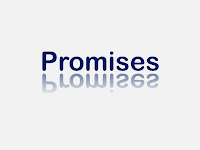Everyone likes surprises, good ones that is. They are unexpected occurrences that can lift spirits and even change lives. A surprise does not have to be the latter to have impact. Sure, if today I won the $40 million Powerball jackpot that would be a surprise and would be life changing. But, surprises that we are more likely to encounter are small in scope yet can have a significant impact on us long term. Marketers should be on the lookout for opportunities to create unexpected moments for customers by what they say and do.
Consistency Breeds Certainty
In a world where we often script our words and actions meticulously to create consistent experiences, unexpected moments can be scary because they deviate from the unified message that we believe builds brands. Consistency is valued because:
- It creates control – Nothing can go wrong if we have policies, procedures, and responses for virtually any situation that arises, can it?
- It reduces uncertainty – Employees and customers have a better idea of what to expect when the service encounter follows a rather rigid, scripted sequence of steps and actions.
- It reinforces a brand’s promise – A scripted service experience delivered consistently over time is simply execution against we come to expect from brands. For example, one of the most anticipated moments when dining at Chick-fil-A (besides eating delicious food) is to hear two words uttered by the server when handing my order to me after I thank her: “My pleasure.” It is part of the script, but I believe that the server and Chick-fil-A feel it is their pleasure to have me as a customer.
Consistency is a valued trait for a brand to possess, but it can have a negative connotation: Boring. If customer experiences are delivered with mechanical-like precision, is there a risk of not connecting with customers on an emotional level?
The Power of the Unexpected
Scripting customer experiences to build consistency and brand promise is not a bad thing, but can it be balanced by injecting unexpected moments in the process. The most poignant unexpected moment I have had as a consumer occurred 15 years ago, but it was so memorable that I am sharing it with you today as an example of the impact an unexpected moment can have. My family was having lunch at Wendy’s in my hometown of West Point, Mississippi. The service encounter began as you would expect, following the script of placing an order, paying, and waiting for food. What happened next was unexpected- As the counter employee handed my order to me she said “Thank you. See you tomorrow.” Her statement stopped me in my tracks! It was so far off-script that I did not know what to say. I giggled, thanked her, and went on my way. I was not going to be in town “tomorrow,” but if I had been I may have gone back to Wendy’s at her suggestion.
I felt a bit strange describing this incident as the most poignant unexpected moment I have experienced as a consumer. After all, the statement “see you tomorrow” hardly stacks up against unexpected moments that companies like Zappos and Nordstrom that are renowned for their service have been known to create for customers. The effect it has had on me is that it has permeated my work as a marketer and educator. How can I create unexpected moments for those I serve to enhance the value of their interactions with me?
The Unexpected Connects
The takeaway is not that you should chuck your scripted customer experiences. They play a role in satisfying customers and defining your brand. Instead, be open to the unexpected; do something that is beyond the norm that will impact customers. Two weeks ago, I took one of our cars to a local tire store to have a leaky tire repaired. When the work was finished, I pulled out my wallet to pay only to hear “no charge.” The tires were not bought there, but there is a great chance that the next set will! I left that business feeling like they cared about me, not just my money. The expected is just that- expected. Look to create unexpected moments to strengthen connections between customers and your brand.









